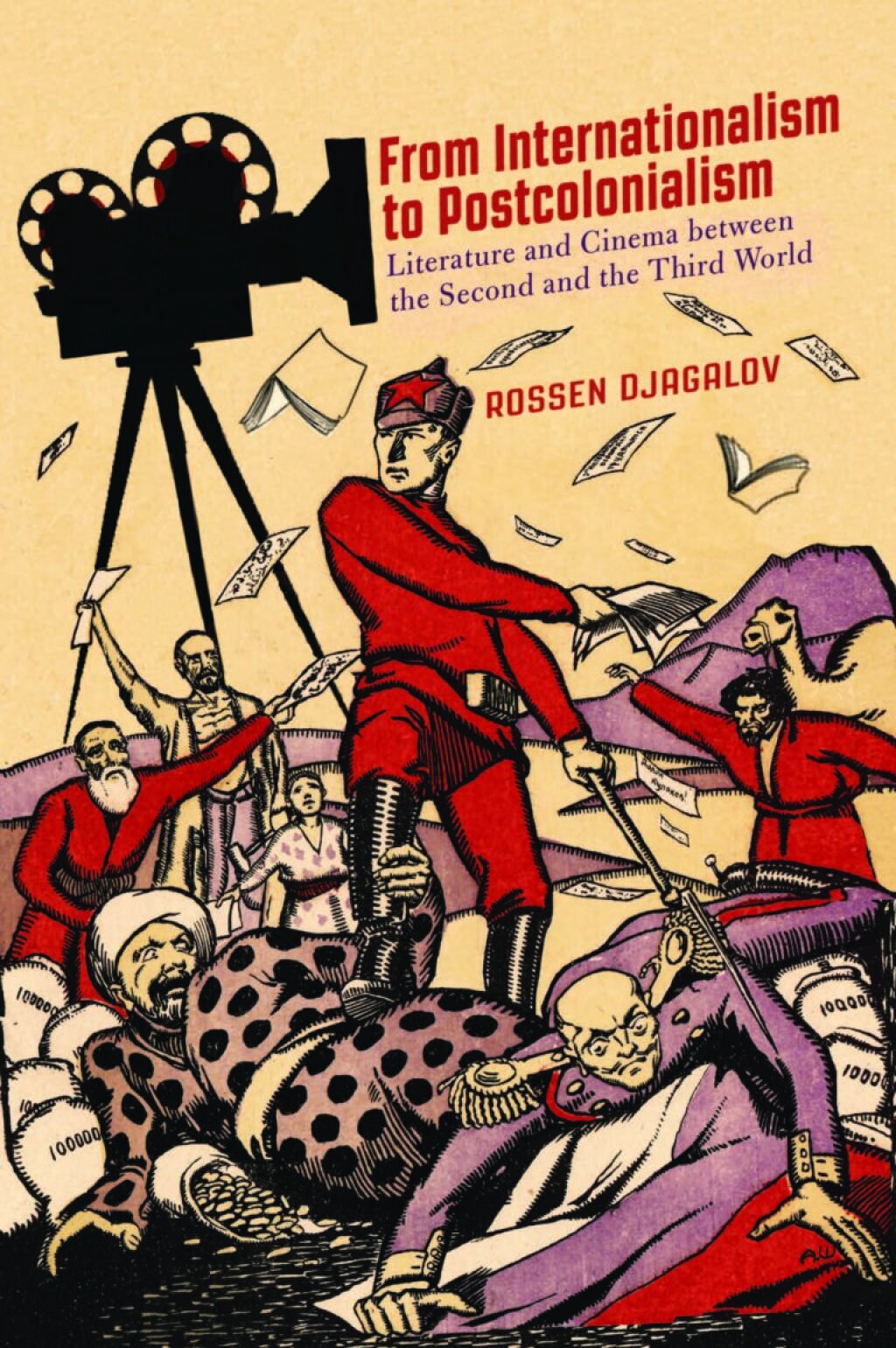pictured clockwise from bottom left: Ksenia Tatarchenko (Columbia), Yanni Kotsonis (NYU), Myles Jackson (NYU), Johanna Conterio (Harvard), Matthew Stanley (NYU), Peder Anker (NYU), Betty Banks (NYU), and Brittany Shields (U Penn)
Friday afternoon February 7th at NYU’s Gallatin School of Individualized Studies, Harvard PhD candidate Johanna Conterio presented her paper at an event made possible by the History of Science Working Group and the Jordan Center.
Conterio’s fascinating subject, and one that is especially timely, is the Soviet orange cultivation project in and around Sochi which began between 1928 and 1929. Conterio explained that the topic of citrus was an outgrowth of her interest in the cultural history of the sanatorium in the Soviet Union, a subject which naturally brought her to Sochi-- a sub-tropical city modeled after Miami's resort landscape.
During the several months she spent digging through the municipal archives in Sochi, Conterio said she made a lucky discovery--“The archive gods were smiling on me.” Conterio had stumbled upon a wealth of documents connecting the top party officials in Moscow to a citrus cultivation project in Sochi, a region which experiences frost and has an average temperature of 60 degrees Fahrenheit-- hardly the ideal for citrus production.
Opening the floor up to audience commentary, Conterio noted that suggestions were welcome in regards to the framing of a story she wants to appeal to a wider audience.
NYU Professor of History Myles Jackson, also a member of the History of Science Working Group, wondered how skills transfer occurred. As mentioned in Conterio’s paper, Soviet agricultural scientists involved in the project were learning from diagrams of orange tree cultivation and acclimatization. To implement the technology and adapt it to Sochi’s particularities, scientists had to reverse engineer the designs. Jackson wondered if this reverse engineering mapped onto a larger pattern of labor in the Soviet Union at this time.
Conterio explained actual contact between the Sochi scientists and engineers with experience in orange cultivation was difficult. “For example, they didn’t send someone to California,” she said. However, the Soviets did send a delegation to India as a means of soaking up information on growing citrus.
Another audience member praised Conterio’s work, but noted the conflicting narratives and wondered if this particular story was more about preservation of the environment or the transformation of it. Conterio acknowledged that this was difficult to pinpoint. She described the Sochi citrus project as being a grand plan to change the natural environment in an effort to make it more hospitable to orange trees. But she also sees it as a preservation effort in that the Soviet authorities viewed the natural environment as one that was perfect for healthy retreats and tourism.
Conterio then elaborated on the cultural meaning of the citrus project. In the 1920s Vitamin C was first identified, and its potential benefits translated into almost Utopian visions for its power to improve health. Conterio explained that although the Sochi project was most certainly related to the promotion of nutrition in the Soviet Union, it was clear from the beginning the output would not be nearly substantial enough to supply the entire population with Vitamin C. Although there were plenty of examples of advertising for orange juice in the 1930s promoting it as a nutritional beverage, oranges were still seen and marketed as an “everyday luxury.” Caviar, champagne, and perfume also fit into this category of luxuries that would be marketed as readily available to the Soviet citizen.
One audience member wondered what the outcome of the Sochi citrus project looked like. To illustrate the agricultural project’s mixed reception, Conterio shared a discovery she made in the archives. Apparently there was a certain level of resistance to the cultivation of oranges in the region, Conterio described a document indicating a peasant had publicly wondered, “Why are we growing citrus here when plumbs grow so well?”
The real failure of the project stemmed from problems of distribution. The spoiling of oranges was all too common. Instead, Conterio explained, “they reframed the region.” Rather than assuming the role of supplier of citrus to the Soviet Union, Sochi became the destination for fruit consumption and a vacation spot where citizens could relax and work on restoring their health.
One audience member [observed the similarities between the Sochi project and the development of citrus agriculture in the United States, what he described as a “democratization of fruit.” He suggested that given the competition between the two major themes of Conterio’s paper-- a larger narrative of central command translating into regional experience, or the localized, bottom-up story of citrus-- that perhaps she might be better off focussing on the latter.
Anne Lounsbery, chair of the Russian & Slavic department at NYU, disagreed and instead argued that Conterio’s research has enormous implications for the narrative many Russian historians take for granted in that it directly contradicts Stalinist gigantism of the 1930s. Lounsbery wondered if Conterio had experienced resistance to her discovery of the bottom-up projects of “regional enthusiasts,” given that these findings compete with the traditional narrative of super-human, centrally dictated projects of the 1930s.
Conterio agreed there are opposing narratives at play, but suggested that her story could go two ways. She admitted it was possible to talk about the development of the sub-tropics as a giant project. “The invention of a region,” Lounsbery suggested. But Conterio acknowledged that the story of oranges is also a local one.
Director of the Jordan Center Yanni Kotsonis praised the originality of Conterio’s work. “A different story allows us to ask different questions,” he observed. As an historian, Kotsonis said he would like to see Conterio keep both perspectives she has so far uncovered in mind while completing her dissertation. However he suggested that her conclusion reveal more about the economic outcomes related to the Sochi citrus project.
Host of the event Matthew Stanley, professor of physics and astronomy at NYU and member of the History of Science Working Group, closed the lecture by thanking Conterio for her paper.



